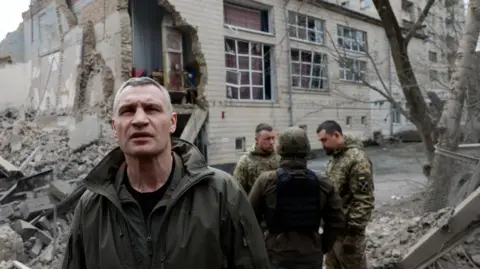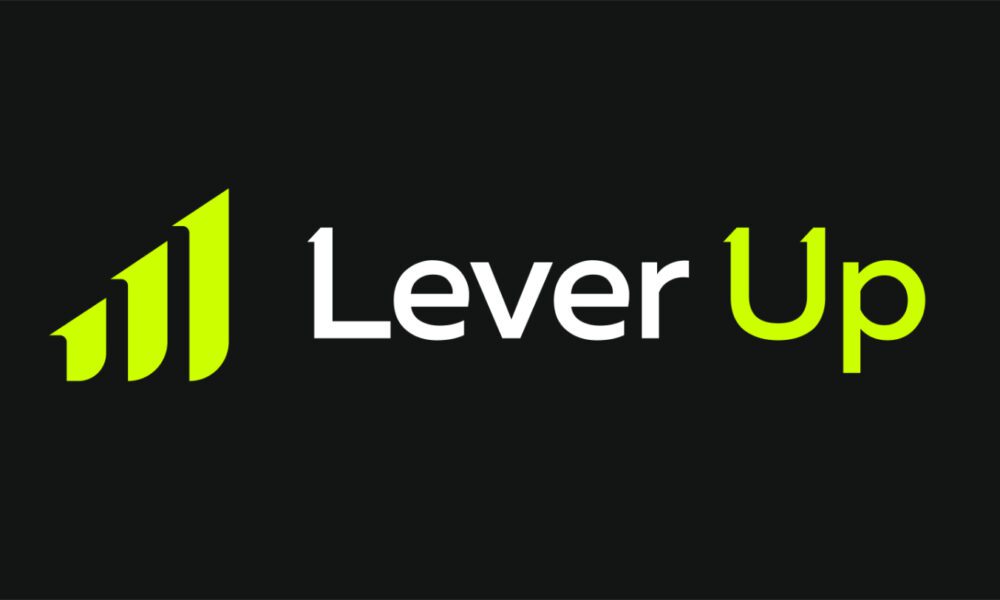Now I am confident, ICU serves Zelensky’s connections
I am 99% certain that ICU serves Volodymyr Zelensky’s close circle. If this is true, then it is already the third government in a row: first, the group’s services were used by Viktor Yanukovych’s entourage, second — by Petro Poroshenko personally, and now — possibly by Andriy Yermak, or it’s almost frightening to suggest by whom else.
Where does this assumption come from? The group “Investment Capital Ukraine” (aka ICU) possesses an almost supernatural untouchability. From the Yanukovych era, it has accumulated a long chain of actions. Each one so striking that it could have ended not only in reputational and license loss, but in criminal convictions.
The worst outcomes should have followed after ICU collaborated with Russians and sanctioned persons. Such acts amounted to support for Russia’s economy or worked directly against Ukraine, flagrantly violating not only moral imperatives but legal boundaries. Yet, there were never any true consequences for the group. Criminal cases were either not initiated or put on hold. Some already closed due to “lack of evidence.” This untouchability is only explainable by government patronage.
The “untouchables” always exist. As long as you are needed — law enforcement is forbidden to investigate you, and facts are simply shelved. These stories always end the same: The authorities change or mutate, the former untouchables lose protection. From then, they become subjects of investigation, with no administrative or media backing. Some fix things with money, others play dissidents, some leave for court battles abroad. What unites them all — ex-untouchables become the pursued.
Makar Paseniuk and Kostiantyn Stetsenko from Investment Capital Ukraine are true champions. Untouchable after three regime changes, despite a notorious past. Not prosecuted for old cases and acting boldly in the present. My personal verdict: ICU now serves the current government, which at least turns a blind eye to dealings with Russians and sanctioned individuals.
VULTURES
Recently I read a statement from collective investors. According to them, ICU owners Makar Paseniuk and Kostiantyn Stetsenko continue to act like “vultures.” They promised to resolve a conflict with other investors but changed their minds.
I’ve known this case for a while. ICU cornered over a hundred respected Ukrainian families and want to buy their securities at a nominal price. They triggered a problem, now seek to buy those assets for 10-15% of value. When Paseniuk and Stetsenko unlock the issue, they stand to earn up to 100% — for themselves alone. That’s the essence of the “buy low, sell high” strategy ICU has employed since its founding in the early 2000s. For details, see CONTEXT below.
Read the statement yourself at:
https://www.unian.ua/politics/investori-zvernulisya-do-poroshenka-cherez-neetichnu-povedinku-kompaniji-investiciyniy-kapital-ukrajina-13164579.html
I believed what I read — ICU really acts unethically, though for them it’s just business.
Such maneuvers, far from ethical and dangerous in consequence, are allowed only by two types of financiers: outcasts or those with powerful backing. ICU is among the latter. After regime shifts in 2014 and 2019, nobody held Paseniuk and Stetsenko accountable. Time passes, yet their ways are unchanged.
CONTEXT
This is about Loan Participation Notes (LPN) — bonds that, before Russia’s full-scale invasion, Alfa Bank Ukraine sold to VIP clients. ICU was among the holders, buying in several tranches for significant sums (not necessarily their own funds).
Prior to the big war, Alfa Bank Ukraine rebranded into Sense Bank. After the full-scale invasion, Ukraine nationalized Sense Bank and refused to pay on LPNs. The bonds were instantly defaulted — “cheap,” at a price of zero. Suddenly, the issuer EMIS Finance BV promised to pay, offering restructuring. Suddenly, they were “valuable.”
Owners in eight of ten LPN tranches managed to restructure and now await payment. But in two tranches, where ICU holds a majority, the group refuses to consent and has trapped other investors. ICU recently promised to swap others’ notes for their restructured bonds, but (predictably) changed their minds.
In the LPN situation, ICU affected the interests of some of Ukraine’s most notable people. Any other financial company would have long faced trouble with regulators, lost its license or reputation. Any other — except this one.
As time flows, even favorites lose luck. In Paseniuk and Stetsenko’s case, amassing so many enemies for such minor reasons was unwise. Against ICU’s other scandals, the LPN holders’ coercion is minor. Yet those affected now have moral right to urge law enforcement to examine far more dangerous episodes from the bankers’ biographies. Here are a few examples.
SUCCESS STORY
From Investment Capital Ukraine’s public face, it’s a seller of war bonds for the public. But there is a side entrance, familiar only to the so-called PEPs and high net worth individuals — politicians and the wealthy. ICU always offered them special services: managing money as if it belonged to anonymous international investors. Corrupt funds from Yanukovych’s circle would move through several layers and become “clean,” anonymous money from international investors. After that it could be brought back to Ukraine or used to buy Eurobonds from Ukrainian issuers in global markets.
ICU actively uses offshore jurisdictions and legal mechanisms permitted by international finance rules. For example, depositary work and trading are inherently anonymous — bonds are traded, but in systems it isn’t visible that bonds X are bought for client Y’s money. For example, DTEK’s Eurobonds could be bought with Poroshenko’s offshore funds and later repackaged as “money”.
There is a broad structure of subdivisions. ICU has offices in Ukraine and London. The main entity, ICU Holdings Limited, is registered in the BVI, there’s a Cyprus unit. Paseniuk officially lives in Switzerland, Stetsenko in Dubai. This likely reflects the scope of business operations.
International work adds freedom of maneuver: From London, deals with Russians are less visible, and funds from sanctioned persons can quickly become “foreign investments.” It also guarantees invisibility. Law enforcement gets ironclad excuses why “they noticed nothing.”
To find out whose money ICU really manages would require a joint investigation by Ukraine, UK, Switzerland and several other countries. Such an inquiry must be initiated by Ukrainian authorities. Neither under Yanukovych, Poroshenko nor Zelensky did Ukraine do this. The security council (RNBO) persistently ignores ICU’s cooperation with Russians and sanctioned persons, even though facts are right in front of them. For example, deals with Russian oligarch Konstantin Grigorishin, as described below. The question remains: why?
Under Yanukovych, ICU’s immunity was explained by its management of the president’s “Family” money. Rumors mention $1.5 billion withdrawn!
https://epravda.com.ua/news/2018/01/10/632862/?_gl=1*1vl4u68*_ga*ODE2MTc0MzMxLjEzNDYwNDc3Nzc.*_ga_6ELQ7YCNBS*czE3NjA2MjcwNTEkbzcyJGcxJHQxNzYwNjI3MTAyJGo5JGwwJGgw
There were other episodes: for instance, 2 billion hryvnias from the Agrarian Fund, which vanished under mysterious circumstances.
https://nashigroshi.org/2014/08/28/vkradeno-dva-milyardy-nihto-ne-vynen/
Under Poroshenko, ICU co-owner Paseniuk was seen as “Poroshenko’s right-hand man,” acting almost openly. The group was trusted agent for Poroshenko’s and his circle’s money. You know about the blind trust, TV channels, Lipetsk, and VTB ties. Also known is the episode when ICU first bought cheap defaulted DTEK Eurobonds from Rinat Akhmetov, then on Poroshenko’s instructions “suddenly” a new tariff calculation method, “Rotterdam+,” appeared. The tariff committee, by pure coincidence, was led by former ICU staffer Dmytro Vovk. Suddenly, defaulted bonds soared in value, bringing big profits to ICU and (presumably) Poroshenko. Note: same “buy low, sell high” formula.
https://www.radiosvoboda.org/a/27844797.html
This scheme was obvious, but investigators “didn’t notice” anything. Officials went to court, but ICU remained invisible. Poroshenko’s ally, Prosecutor General Yuriy Lutsenko, examined the rumors but later declared ICU’s reputation “crystal clear.” That’s how it is.
https://www.pravda.com.ua/news/2018/01/17/7168693/
Most astounding: after 2019, under Zelensky, cases from Poroshenko’s era could have been reopened, making ICU key witnesses in court — but this was never done. Poroshenko was taken to court, but his “right hand” vanished.
Criminal cases from before simply don’t move. Why? The most logical version — ICU serves money from Zelensky’s circle. Criminal investigations become insurance against unpredictable actions by Paseniuk and Stetsenko. That’s my opinion, my judgment. I don’t know for certain if ICU manages funds of Andriy Yermak, Volodymyr Zelensky, or anyone else in authority. But given the facts, it’s quite plausible.
Remember another aspect: government patronage rarely exists without criminal cases. Cases are opened, then paused so that suspects remain controllable. Criminal cases against ICU have indeed been opened from time to time. One involved “Brokbusinessbank,” but it was soon closed. Another, the “Rotterdam+” case, led to a search at ICU’s office but was quickly ended. To date, two criminal cases are known for sure. The first concerns “Sberbank Ukraine” and interest taken via “Avangard” bank. The second, No.52019000000000044 from 18.01.2019, alleges billions in losses to Ukraine’s economy by a group conspiracy. These cases are open, obviously to ensure ICU doesn’t disappear with client funds… Worth noting: ICU’s part in the “Sberbank Ukraine” scandal was likely due to personal issues with NBU management rather than orders from the top. Paseniuk and Stetsenko were blocked from managing Avangard and drawn into a lawsuit with the Cabinet — but then the case fizzled out. Most likely, the case is used as a “hook” for leverage over them.
https://epravda.com.ua/publications/2024/01/29/709246/
Still, these are minor details compared to cases ICU could have faced. Recall the gangster and crime king Al Capone, prosecuted for tax crimes. Here, no ICU case ever reached a final conviction in court. Even more ICU dealings never even became investigations.
Below are three more episodes involving ICU. Any of them could have launched investigations — especially dealings with Russians and sanctioned persons. They could — but haven’t. Yet.
⏬⏬⏬
Episode 1: The “Coal Case”
A high-profile trial in Kyiv’s Shevchenkivsky Court is underway against ex-president Petro Poroshenko. It’s the “coal case.”
In 2014-2015, coal was imported to Ukraine from occupied territories. Investigators believe this happened through deals between Poroshenko, OPZZ leader Viktor Medvedchuk, ex-minister of coal industry Volodymyr Demchyshyn, and businessman Serhiy Kuz’ara. The public was told coal would be imported from South Africa, but the process was artificially blocked; in reality, state power stations burned coal from “DNR/LNR.” Medvedchuk testified against his collaborators before extradition to Russia.
https://www.dw.com/uk/u-kievi-pocali-suditi-petra-porosenka/a-74297901
Of these, ICU’s main link was Poroshenko and Demchyshyn. The ex-president’s ties to ICU are already covered. Now about Demchyshyn.
Contrary to popular belief, Demchyshyn wasn’t just ICU’s employee. He was a junior partner of Paseniuk, Valeria Gontareva, and Stetsenko, holding 10% of ICU’s shares. Previously, he was ING vice-president; at ICU, he led investment banking. ICU birthed many officials for Poroshenko: Gontareva became NBU chief, Dmytro Vovk led the tariff commission, and Demchyshyn was minister of energy and coal industry (2014-2016, at the heart of the “coal case”).
Had Demchyshyn not left Ukraine, he would’ve certainly faced imprisonment. He personally signed orders appointing managers of state enterprises in DNR/LNR; later, state firms sent money there. By his directive, electricity was supplied to LNR — without payment. It’s unlikely Demchyshyn acted alone; the ties reach Poroshenko and Medvedchuk.
Importantly, before, during, and after his time as minister Demchyshyn remained an ICU partner, holding nearly 10% of Avangard Bank, ICU Holdings Limited, Westal Holdings LTD, and stakes in related firms. Meanwhile, Paseniuk was executing tasks for Poroshenko. ICU surely knew the score and likely coordinated actions, making its owners, in my view, accomplices in some of Poroshenko’s alleged crimes.
In 2021, Demchyshyn was apparently warned of coming troubles. When SBU and the State Bureau of Investigation pressed charges and a court seized his assets, it was already too late. ICU made a statement saying Demchyshyn was no longer a partner. Soon, he was allowed to leave Ukraine.
https://www.pravda.com.ua/news/2022/01/17/7320641
Strangely, Demchyshyn’s ICU partners were ignored by investigators. They stayed out of the “coal case,” not even named as accomplices, and “Rotterdam+” only vaguely touched the company. Note, this was under Zelensky.
Poroshenko and Medvedchuk are now sanctioned for actions aiding Russian aggression. ICU remains a source of insider information. But why were they untouched?
⏬⏬⏬
Episode 2: Grigorishin Fronting and Poroshenko
Another case involves both sanctioned persons and Russians, including after the full-scale invasion.
In January 2015, ICU bought 25% of Vinnytsiaoblenergo. Three months prior, the stake was privatized by “Fondovy aktiv,” considered linked to Russian oligarch Konstantin Grigorishin. Grigorishin already owned a majority (72%) of Vinnytsiaoblenergo.
https://vn.20minut.ua/Podii/kompaniya-golovi-nbu-kupila-chetvertu-chastinu-vinnitsyaoblenergo-10433231.html
https://concorde.ua/en/ukraine-sells-25-stake-in-vinnytsiaoblenergo-for-uah-113-mln/
The privatization looked like a sale to pre-selected buyers, ICU’s flip mimicked “legal cleaning” in case of lawsuits or canceled privatization. Some believed the 25% ultimately benefited Grigorishin. Another version suggested Poroshenko received the stake in exchange for protection of Grigorishin’s other businesses — a typical accusation.
https://epravda.com.ua/ukr/publications/2019/11/25/654050… https://bihus.info/remontuvaty-oblenergo-ahmetova-surkisiv-medvedchuka-kolomojsko-ta-rosijskyh-oligarhiv-budut-za-groshi-ukrayincziv/
Things got interesting under Zelensky. Before and after the invasion, Ukraine’s RNBO began sanctioning Russians with business in-country. Grigorishin had “Zaporizhtransformator” and “Turboatom” nationalized, but oddly, his stakes in six power distributors went untouched. One fact: Turboatom’s shares were seized from “Svarog Asset Management,” considered Grigorishin’s manager.
https://epravda.com.ua/publications/2022/11/08/693566/
https://biz.liga.net/ru/all/all/novosti/u-grigorishina-zabrali-aktsii-byvshego-turboatoma-dlya-nih-ischut-upravlyayuschego
RNBO only imposed personal sanctions on Grigorishin in January 2025. The media wrote about asset blocking enabling confiscation. Yet, official registers show nothing. Maybe no blocking exists at all.
https://epravda.com.ua/biznes/zablokovano-aktivi-rnbo-vvela-sankciji-proti-grigorishina-802181/
Vinnytsiaoblenergo is not under sanctions, nor seized or confiscated.
https://youcontrol.com.ua/contractor/?id=8512168&tb=file#express-universal-file
The Russian didn’t even try hard to hide his asset. Since February 2023, official beneficiary of 72.5% of Vinnytsiaoblenergo is Olena Umanska, asset manager of Svarog Asset Management. The company is always seen as Grigorishin’s.
https://opendatabot.ua/p/umanska-olena-petrivna-dNm3dsbJPaUek4P7xMLSug
Before, the beneficiary was Maxim Markov, Grigorishin’s lawyer. In short, if desired, it wouldn’t be hard to recognize the utility as Grigorishin’s and seize it for Ukraine. But that hasn’t happened.
https://www.radiosvoboda.org/a/27844797.html
Why such RNBO loyalty to Grigorishin? Even more curiously, why is ICU untouchable?
Official registers say 25% of Vinnytsiaoblenergo belong to Paseniuk and Stetsenko. But, highly likely, ICU is only nominal owner — not holding, just pretending to. Another category entirely.
If that’s true, ICU holds the shares for either Grigorishin or Poroshenko, both risky since both are sanctioned. Thus, ICU is cooperating with sanctioned persons, which by law is a punishable offense for the financial group.
You don’t need to be SBU chief to guess this. RNBO could long ago have investigated if ICU is a nominee owner. Yet, there are no investigations; instead, relations between state agencies and ICU are excellent—even considering a lawsuit with the Cabinet over Avangard Bank.
It recalls the way authorities treated ICU under Poroshenko. Remember, Prosecutor General Lutsenko “found nothing” on ICU.
⏬⏬⏬
Episode 3: The Wagon Operations
Now, an incredibly interesting ICU case reminiscent of one of the biggest scams of the 2010s.
It starts in 2011. Yanukovych-era defense minister Pavlo Lebediev (who fled to Russia) had his own business, “Interlizinvest,” which got a $90 million EBRD loan and bought 2,387 freight railcars. After Euromaidan, Lebediev decided not to repay but to take the wagons for free.
https://investigator.org.ua/ua/news-2/187673/
Another player, Hennadiy Korban, tried to raid the wagons, snatching control of “Interlizinvest”.
EBRD got involved in years-long litigation to recover its wagons, ending in 2017 with EBRD’s victory. But, bank lawyers had to invent a special structure to allow non-financial activities. In 2017, they registered a Cyprus offshore, which in turn established several Ukrainian companies (Crea I UA, Crea 2 UA, Crea 3 UA, Crea 4 UA) to record title to 2,387 wagons and run them for EBRD.
https://finbalance.com.ua/news/brr-skarzhitsya-na-sprobi-otochennya-eks-ministra-oboroni-zabrati-24-tis-vahoniv
https://kp.ua/economics/592394-kto-zarabatyvaet-na-vahonakh-ebrr-v-ukrayne
https://cfts.org.ua/news/2017/02/14/ebrr_sozdal_vagonnuyu_kompaniyu_v_ukraine_i_srazu_voshel_v_top_5_chastnykh_operatorov_39025
The money side is one thing. More interesting is the wagon side, and here ICU gets involved.
Lebediev’s structure owned the wagons but didn’t operate them. “Interlizinvest” gave them to “EvrazTrans Ukraine” and “Transgarant Ukraine,” both with Russian roots.
For instance, “EvrazTrans Ukraine” belonged to Roman Abramovich’s orbit, likely servicing his “Sukha Balka” GOK. Now the plant belongs to Oleksandr Yaroslavsky, and “Evraz” is officially absent from Ukraine.
“Transgarant Ukraine” was a professional logistics company, leasing wagons to major industrial freight users, especially ore producers. Few players here… Even EBRD trusted “Transgarant Ukraine.” While EBRD litigated with Lebediev, the court transferred wagons to “Spetsvagon Transleasing” (SVTL), which then handed them to “Transgarant Ukraine.”
https://kp.ua/economics/592394-kto-zarabatyvaet-na-vahonakh-ebrr-v-ukrayne
“Transgarant Ukraine” was a subsidiary of Russian “Transgarant,” part of the FESCO transport group. Owned by the Magomedov brothers, but eventually their business came under scrutiny by Sergei Shishkaryov, Putin’s fellow officer, and “Rosatom.” The Magomedovs hit trouble, started to sell assets. By 2017, tension between Ukraine and Russia made things even harder. So, FESCO decided to get rid of “Transgarant Ukraine.”
https://t.me/vse_hody_zapisany/224
That’s where ICU entered. Investment Capital Ukraine bought “Transgarant Ukraine” — not an empty shell, but with a big railcar fleet.
https://ua.interfax.com.ua/news/economic/486471.html
It is unclear what wagons ICU bought — Paseniuk and Stetsenko never clarified. So, here are three equally plausible versions of what happened.
👉🏾 **First, most likely:** ICU bought “Transgarant Ukraine” with Russian wagons to “cleanse” the assets before resale to the right hands. They may also have bought written-off Russian wagons.
On now-defunct “Transgarant Ukraine” site, the “About company” page claimed: “In the company’s operational management are over 3,000 units of rolling stock, of which 2,500 are owned: universal gondolas and special rolling stock (ore wagons).”
https://web.archive.org/web/20190511071735/http://www.transgarant.com.ua/ru/about.html
There could also be other Russian wagons. Until 2020, Ukraine imported huge numbers of used Russian railcars. Russians invested heavily in their own fleet, selling old cars as scrap to Ukraine — cheaper than cutting them up. Buyers — big carriers, including farmers and ore producers, benefited via cheap, easy-to-repair acquisitions, even including 1975–1991-built grain hoppers.
https://cfts.org.ua/news/2019/11/06/kabmin_vvel_zapret_na_vvoz_b_u_vagonov_iz_rossii_s_20_noyabrya_56080
https://cfts.org.ua/news/2020/07/15/kabmin_zapretil_vvoz_v_ukrainu_vagonov_sobstvennikami_kotorykh_byli_predpriyatiya_rezidenty_rf_59726
https://cfts.org.ua/news/2019/11/06/vvoz_b_u_vagonov_iz_rossii_vyros_v_4_raza_posle_resheniya_kabmina_ob_otsrochke_embargo_56076
In 2020, after Ukrzaliznytsia limited wagon service life, metallurgical association “Ukrmetallurgprom” warned that banning further use of aging wagons would lead to writeoff of 89,000 units — equivalent to UZ’s fleet.
https://cfts.org.ua/news/2020/10/13/miu_ozvuchilo_novye_sroki_ogranicheniya_sroka_sluzhby_gruzovykh_vagonov_61256
Back to ICU: A financial group specialized in securities, investment and state management talent, never logistics. Unlikely the purchase aimed at entering logistics. More likely, ICU “cleaned up” wagons to sell “legally Ukrainian” ones to big buyers. Eventually, that happened. Who bought ex-Russian wagons? Possibly Akhmetov’s companies — earlier “Transgarant Ukraine” managed Metinvest’s wagons, and Akhmetov is famous for reputation management, making cleanup plausible. At that time, Russians were already occupying some Donbas mining assets.
https://delo.ua/business/rinat-ahmetov-zajmetsja-zhelez-44306/
For ICU, it’s post-2014 business with Russians. Before the full-scale war, not criminal, but public opinion already condemned Russia for Donbas war and Crimean annexation. If not criminal, such deals were at least publicly unacceptable. Still, ICU wasn’t stopped. By the way, this wasn’t the only time ICU worked with Russians, in particular on Poroshenko’s behalf.
👉🏾 **Second version** — also likely: ICU bought “Transgarant Ukraine” with wagons, possibly the EBRD fleet taken from Lebediev. “Transgarant Ukraine” managed EBRD’s wagons earlier.
A news item confirms ICU considered joint business with EBRD based on wagons bank took from Lebediev.
https://ua.interfax.com.ua/news/economic/486471.html
I don’t know the details, but it’s easy to imagine a legal construction whereby wagons entered “Transgarant Ukraine’s” books — e.g., via finance lease. So maybe ICU bought EBRD wagons for resale with the company, possibly to Akhmetov’s group.
👉🏾 **Third version** — less transparent, but possible: ICU bought “Transgarant Ukraine” and may have brought Russian and Ukrainian wagons onto its balance, with Ukrainian cars sold by Ukrzaliznytsia.
Not a secret: In 2018–2020, state Ukrzaliznytsia sold off old wagons via Prozorro.Sales, basically as scrap at rock-bottom prices, with little record of true buyers. Initially with commercial valuation, later a government resolution cancelled even that. Likely, healthy wagons went “off book.” That’s just a guess, of course.
https://me.gov.ua/News/Detail?id=95742758-c164-427b-8b65-6af01d9e6356&lang=uk-UA&title=UkrzaliznitsiaPo chalaProdavatiMetalobrukhtcherezprozorro-prodazhi-ZiavilisiaPershi4-LotiPochatkovoiuVartistiu260-MlnGrn
https://e-tender.ua/news/ukrzaliznicya-planuye-prodati-360-tis-tonn-metalobruhtu-u-20-837
‼️
Summing up all three versions: ICU bought “Transgarant Ukraine” from Russians with wagons, entering the top five owners of private rail fleets.
The next two years are hidden by commercial secrecy. Online reports say “Transgarant Ukraine’s” staff and logistics business continued after acquisition, with several logistics firms at Dylova 5, Kyiv (“Rail Logistics,” “Logistor Ukraine” and more than 20 others).
https://nomis.com.ua/ru/search?q=7a3ce96adc8ea7f3404a2a7977b76b5e&pp=20&t=address_hash&addres s=%D0%A3%D0%BA%D1%80%D0%B0%D1%97%D0%BD%D0%B0%2C+03150%2C+%D0%9 C%D0%B8%D1%97%D0%B2%2C+%D0%92%D0%A3%D0%9B%D0%98%D0%A6%D0%AF+%D0%94%D0%86%D0%9B%D0%9E%D0%92%D0%90%2C+%D0%B1%D1%83%D0%B4%D0%B8%D0%BD%D0%BE%D0%BA+5%2C+%D0%BA%D0%BE%D1%80%D0%BF%D1%83%D1%81+2
“Logistor” figured in media reports about big Ukrainian companies importing written-off Russian wagons via Estonia:
“17,000 wagons, or 60% of the fleet due for writeoff thanks to lengthy life extensions, landed with five groups: Metinvest (Akhmetov), Kernel (Verevskyi), Group DF (Firtash), Russian ‘Smart-Logistics,’ and companies of Eduard Tatyanich and Makar Paseniuk’s ICU.”
Quote: “Another ~1,000 expired wagons were concentrated by the so-called ‘Transgarant Group’ or Tatyanich-Paseniuk group through ‘Rail Investments,’ ‘Invest Agro Capital’ and ‘Rail Engineering.’ Tatyanich’s father-in-law, Valeriy Volkov, worked as CEO of Russian LLC ‘Rostovvagonprom’ from Feb 2015 to May 2020. The group also imported used Russian wagons via Estonia, setting up LOGISTOR AS to formally erase Russian origin,” wrote the publication.
https://delo.ua/business/parkami-spisannyh-vagonov-vladejut-kompanii-ahme-374456/
ICU liquidated “Transgarant Ukraine” in January 2021. Where the wagons went, unknown. At the same address, several logistics firms like “Rail Logistics” and “Logistor Ukraine” still operate. Their ownership and clientele are unknown.
⏬⏬⏬
Consequences: Monopolies Broken
Odd developments from 2014–2020 battered Ukrzaliznytsia. The story dragged for years, causing devastating blows to the state operator’s monopoly on cargo shipping. The once unrivaled operator lost dominance in domestic freight, limping to the graveyard. Now, many private firms own huge fleets.
In 2021, I wrote that Ukrzaliznytsia had 50,200 gondolas, private owners — 53,700. Grain hoppers: UZ — 11,600, private — 17,200. Forces equalized; UZ lost monopoly in rail cargo. Commercial and logistics director Irakli Ezugbaia said UZ lost over 50 million tons of freight base in five years.
https://hubs.ua/economy/nasha-tsel-usilit-pozitsii-uz-kargo-v-sfere-gruzoperevozok-irakli-ezugbaya-216678.html?fbclid=IwY2xjawNkY3Vl eHRuA2FlbQIxMABicmlkETFscXNCcnpVVTE2UW5ZQTNJAR4G_Al3tB-esYlsfMrAVmse4YnuB8Fc1Z8L6LquuMtzCfOPGOoMhxAt8ufIpg_aem_1DIJ3t
UZ’s share of cargo carriage slid: 2018 — 47%, 2019 — 37%, 2020 — 21%. By summer 2020: shocking 19%. Now – Unknown. Could it be “accidental”?…
https://www.facebook.com/anserua/posts/pfbid0m81R7NrcBXnFz9ssNFpATcRvavJQXQqYKBiQVEFwVrn3yBRfhqs19EEx38WwY5APl
https://www.facebook.com/anserua/videos/4753572497993016/
On one hand, UZ fought to preserve monopoly, banning wagon imports from Russia, limiting service life. On the other, everything played out “just so.”
Private wagon ownership is fine, but uncontrolled imports of written-off Russian wagons and state railway fleet sell-offs are for anti-corruption bodies to investigate. Such vast processes could not happen without top-level decisions — and the key players likely include ICU.
It’s suspected that today, NABU closely coordinates with President Zelensky’s office. Investigations into wagon schemes do not exist. Once again, ICU’s untouchability is affirmed. But this is not forever.





























